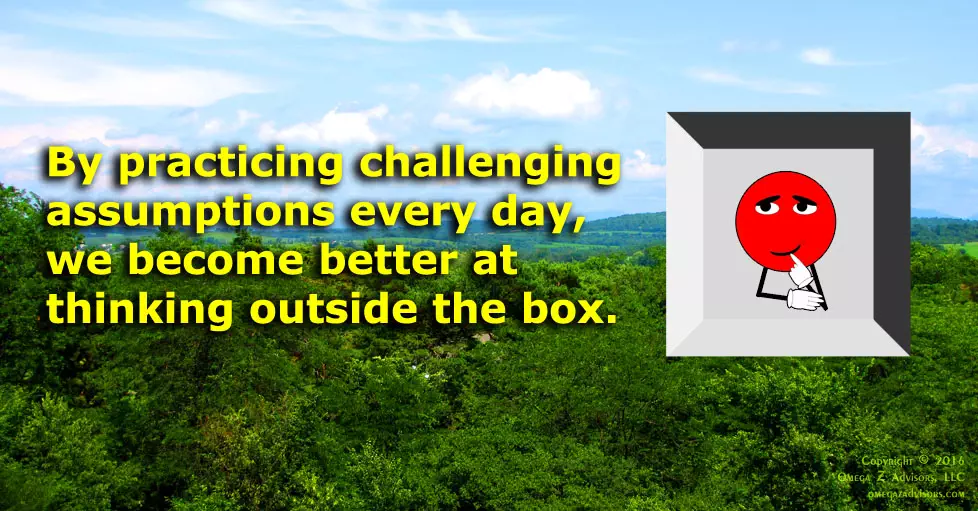How Challenging Assumptions Every Day Improves Problem Solving
Experts often cite challenging assumptions as a great problem-solving tip. It helps one think outside the box. Yet, they don’t say much on how to do this or how to become better at it. Challenging assumptions every day is the answer.
Assumptions Exist In All Communications
The first step towards better spotting assumptions is to realize they exist in all our communications. They speed them up. They make them more efficient.
For example, unless we’re in a foreign country, we usually don’t ask what language someone speaks. We just speak. In the United States, we assume it’s English. We also assume people understand some basic words. We avoid complex ones. If they are in our field of work, we assume they know certain acronyms.
Assumptions become more complex though. They affect how we think and see things. Context plays a key role here. For instance, we consider a tire “filled with air” as full. Yet, an empty juice bottle containing nothing but air is “empty.” Of course, if that bottle contained a deadly, invisible gas, rather than air, it would not be “empty.”
Challenging Assumptions Every Day Trains The Mind
After accepting that assumptions exist in all communications, spotting them comes next. They hide at similar places and times. Knowing these makes spotting them easier. Thus, training the becomes key. Examples help here.

Challenging assumptions every day, trains the mind to solve problems better.
The training process resembles those used by chess players preparing for matches and students preparing for standardized tests. They run through practice scenarios and questions. Yet, they know they won’t see those exact ones.
The chess players are training their minds to see patterns. The students are training them to get used to the format and style of questions. Both are training their minds to handle the stress and effort to solve problems.
It’s the same with training the mind to spot assumptions. Just as chess players and students practice every day, doing so with assumptions will help too. Eventually, it becomes second nature.
More Challenging Assumptions Examples
For instance, here are more examples. They train the mind:
- A sales person asking whether you want to buy the blue car or the red one assumes you wish to buy a car in the first place.
- A manager saying you can make a lot of money by doing something assumes that money is very important to you.
- When we told a neighbor to get ice, we assumed he saw we had five ice chests; he only bought one bag.
- When businesses make a process more efficient, they assume quality won’t suffer.
- When people ask “Do you understand?” they often assume that “yes” also means we agree or will do what they asked.
By spotting and challenging assumptions every day, problem-solving skills will improve.
- How Challenging Assumptions Every Day Improves Problem Solving
- Challenging Assumptions Behind 1+1=2 As Case Study
- Challenging Assumptions Example
- Challenging Assumptions Exercises
- Solving Problems by Challenging All Things Equal Assumption
- 3 Common Examples of Challenging Assumptions at Work
- Challenging Assumptions in Three Black and White Thinking Examples
- Without Question Easiest Tip To Challenge Assumptions Like A Pro
- 6 Challenging Assumptions Exercises From Business



I never thought about this before; I will try it.
Periodically, I will post other examples of challenging assumptions.